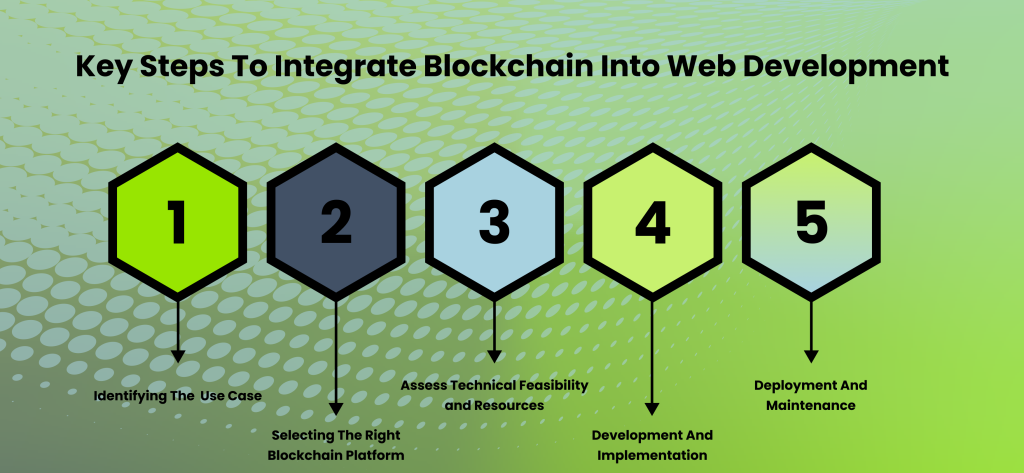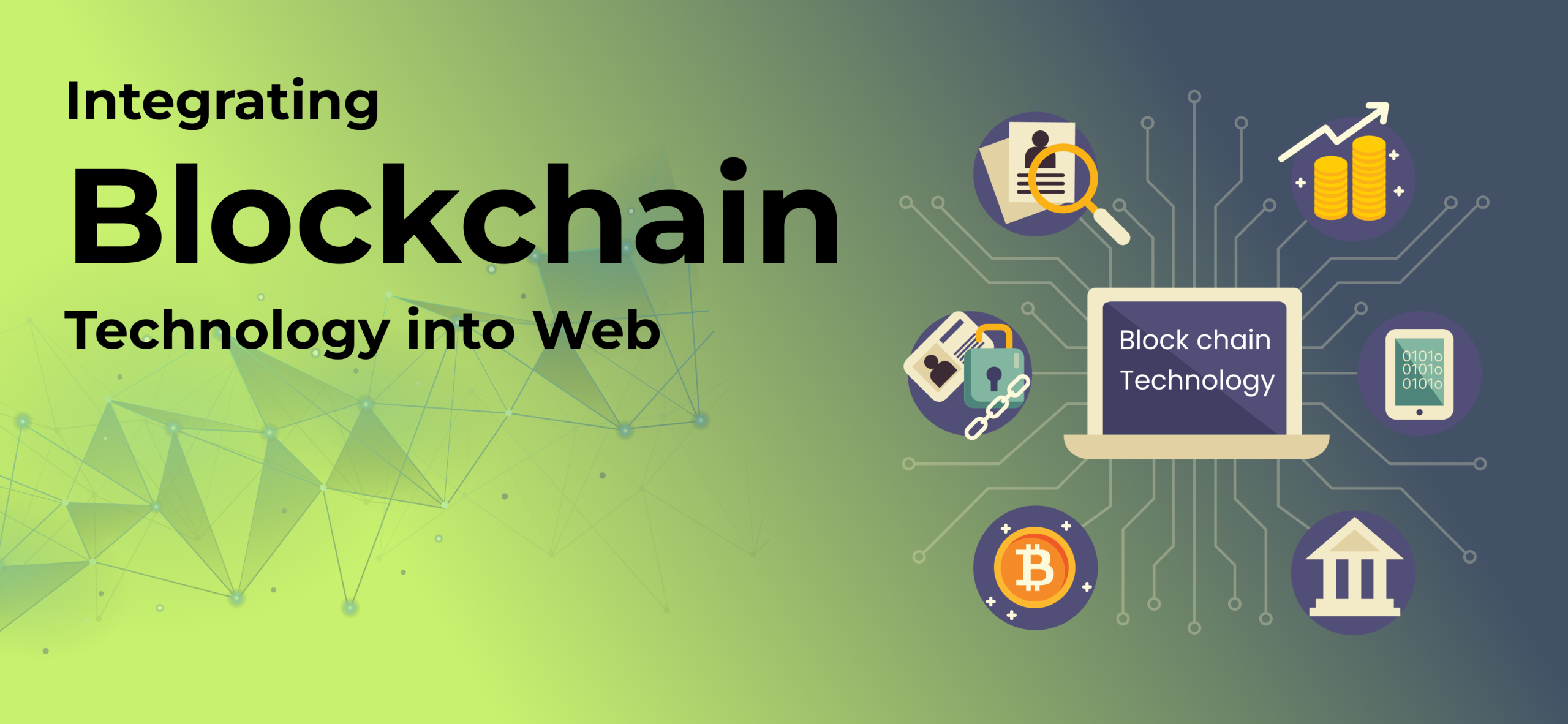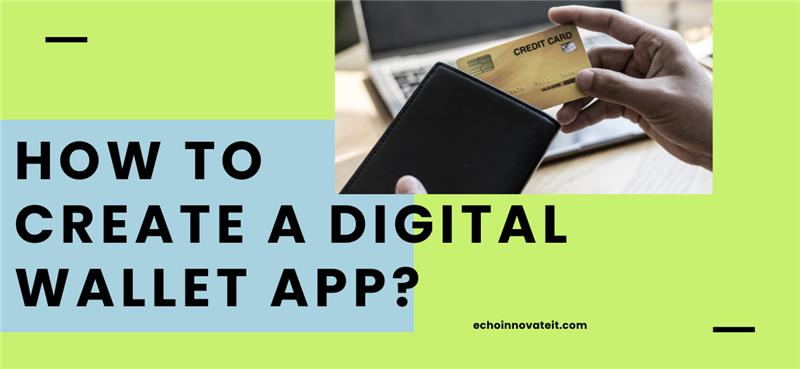Imagine an immutable digital ledger where every transaction can be verified with 100% certainty: that’s at the core of blockchain technology, quickly moving from fringe finance into mainstream innovation and finding relevance in industries as disparate as healthcare to supply chain management. It has proven its transformative potential already.
Imagine this power seamlessly integrated into the web applications we rely on every day – blockchain integration promises to revolutionize Web Development by producing decentralized apps that are more secure but also transparent, efficient, and user-centric. From decentralized marketplaces to secure identity management, apps are among the many possible uses of blockchain.
Unfortunately, this journey won’t be free from obstacles. Scaling, security, and user experience present formidable hurdles to success, but blockchain’s potential to build next-gen web applications that reimagine trust and data ownership is immense; blockchain will play an instrumental role in writing its legacy story.
This blog post is your practical guide to understanding Blockchain Integration within web development. We’ll demystify its technology, explore real-world use cases, and offer actionable insight to assist with creating tomorrow’s decentralized websites.
Understanding the Basics of Blockchain
At its core, blockchain is a revolutionary data storage and management method that offers many unique benefits over conventional databases. What distinguishes it is that data is no longer located solely within individual servers; now, it exists across an interlinked system of nodes in an encrypted distributed ledger known as blockchains.
- Decentralization: Instead of depending on one central authority to store their information, blockchain distributes information amongst a network of computers – eliminating single points of failure while strengthening security – creating something similar to an accessible public ledger where all members in the network have equal access.
- Immutability: Once data has been recorded on a blockchain, it becomes virtually impossible for any individual or institution to alter or delete it without significant consequences. Cryptographic hashing techniques ensure this immutability, ensuring its integrity and trustworthiness.
- Cryptography: Blockchain relies heavily on cryptographic techniques for secure transactions and data. These techniques include hashing algorithms and digital signatures, which prevent unauthorized access or manipulation by third parties.
- Distributed Ledger Technology (DLT): Blockchain is one type of DLT. In this type, ledger data shared and synchronized across many network participants is updated transparently and accountable. This distributed nature helps ensure transparency.
Key Components of Blockchain
Understanding these components is paramount when creating blockchain-integrated web apps:
- Blocks and Chains: Data is organized into “blocks,” linked together chronologically into a chain by cryptographic hashes, which form unbreakable data chains. Each block encloses this hash of its predecessor for maximum record integrity.
- Transactions: Blockchain transactions represent the exchange of value or information among participants and represent its core structure.
- Consensus Mechanisms: Consensus mechanisms are algorithms designed to ensure all participants in a network accept transactions as valid transactions. Proof of Work (PoW) requires participants to solve complex mathematical puzzles to validate transactions.
- Proof of Stake (PoS): Validators are selected based on how many tokens they own and are willing to place at stake as validators in this system.
- Smart Contracts: Self-executing smart contracts use code-written agreements as the terms of the agreement to automate processes and enforce agreements without intermediaries or mediators.
Key Steps To Integrate Blockchain Into Web Development

Integrating blockchain into a web development project requires taking an organized approach. Here is an outline of its key steps:
Identifying The Use Case
Step one in successfully incorporating blockchain is clearly outlining its specific use case. Don’t integrate blockchain simply for its own sake—ask yourself, instead: What problem are you solving with it, and does blockchain offer any unique advantage over traditional solutions? Does decentralization, immutability, or transparency play an essential part in your application?
Whether enhancing data security, creating secure transactions, or developing decentralized marketplaces, having a clearly outlined use case will guide development processes while assuring its integration delivers actual value to all involved.
Selecting The Right Blockchain Platform
Once you understand your use case, the next step should be selecting an ideal blockchain platform. Considerations include factors like scalability, transaction speed, cost, developer tools, and community size; Ethereum excels at complex smart contracts due to its vast developer community, and Polygon provides solutions for scaling Ethereum apps; Solana stands out for fast transaction throughput, while Hyperledger serves enterprise applications by offering a robust framework for private/permissioned blockchain development – carefully consider your project requirements before choosing an optimal platform.
Evaluate Technical Feasibility and Resources
Before undertaking development of any sort, you must assess both its technical feasibility and necessary resources. This involves examining your team’s experience in blockchain development (smart contract creation/integration with web3) and complex integration issues requiring external expertise (libraries/API availability, etc). Also, evaluate hardware/software requirements, including node infrastructure/development tools, to avoid delays during your process and guarantee smooth development progress. A thorough assessment can save both money and ensure smooth development progress.
Development and Implementation
From here on, outcomes, the hard coding. Create smart contracts, integrate them with your web app, and build front-end and back-end components using web3 libraries such as web3.js or ethers.js to interact with blockchain technology. Ensure that proper security practices such as key management and smart contract auditing are observed while conducting rigorous tests to ensure it functions as intended and is free from vulnerabilities, and create user-friendly interfaces that simplify complex blockchain interactions for accessibility across a wider audience.
Deployment and Maintenance
After careful evaluation and thorough testing, launching your application on the main net is time. This includes configuring infrastructure, deploying smart contracts, and ensuring users can access it. After deployment is complete, ongoing maintenance becomes critical; monitor the app’s performance closely while also fixing bugs or security vulnerabilities and staying abreast of new blockchain developments; update smart contracts regularly as needed to maintain compatibility and security; support users while continuously improve based on feedback provided from them and regularly evaluate how your app has performed against competitors’ offerings.
Conclusion
Integrating blockchain into web development opens a new era of secure, transparent, decentralized applications. We have seen how blockchain improves data integrity, facilitates secure transactions, and helps develop innovative apps. Benefits include increased trust and simplified processes, creating an equitable digital landscape.
As part of your exploration into blockchain integration, we are ready to provide expert assistance and make your integration vision come to fruition! Contact Echoinnovate IT now so we can bring your blockchain vision to reality.
FAQs On Integrating Blockchain Technology into Web Development
What features make a payment app truly stand out in today’s market?
A standout payment app should offer seamless user experience (UX), real-time transaction tracking, top-notch security (e.g., biometric login, end-to-end encryption), and multi-platform support. Integrating value-added features like budgeting tools, rewards, or crypto support can also give your app a competitive edge.
How important is UI/UX design in the success of a payment app?
UI/UX is critical. A smooth, intuitive design builds trust and keeps users engaged. Complex, clunky interfaces often drive users away—especially when dealing with something as sensitive as money. Clear navigation, responsive design, and user-centric features are key.
What security measures should be prioritized when developing a payment app?
Start with robust authentication (2FA, biometrics), encryption for data in transit and at rest, and secure APIs. Compliance with standards like PCI DSS and regular security audits are essential to ensure user trust and regulatory alignment.



